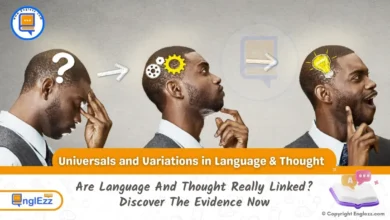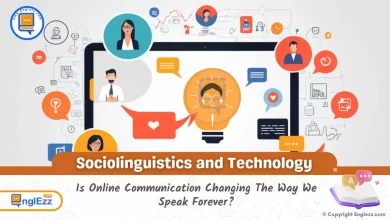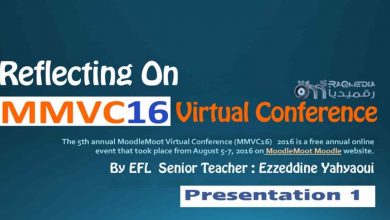I’ve been in education for over two decades, and if I had to pinpoint the single most transformative practice I’ve ever integrated into my teaching, it would be formative assessment. This isn’t just another educational buzzword. It’s a fundamental shift from teaching as a monologue to teaching as a dynamic, responsive dialogue.
For years, I watched students struggle in silence until the big, scary summative test revealed the gaps in their learning – gaps that, by then, were often too wide to bridge easily. Formative assessment changed all of that. It gave me a real-time lens into my students’ minds, allowing me to adjust my instruction on the fly and ensure they were building knowledge on a solid foundation.
What is Formative Assessment? The Educator’s Definitive Guide to Doing It Right
In this comprehensive guide, I will demystify formative assessment. We’ll move beyond the simplistic “it’s assessment for learning” definition and delve into what it truly looks like in practice. I’ll provide you with a robust, actionable framework for implementing it effectively, drawing on my own experiences and the most current pedagogical research. My goal is to equip you not just with theory, but with the practical expertise to make formative assessment the engine of your classroom’s success.
Unlock the power of formative assessment. I guide you through what it is, why it’s the cornerstone of effective teaching, and provide a practical, step-by-step framework for implementation in any classroom.
Deconstructing the Definition: What Formative Assessment Really Is
At its core, formative assessment is a planned, ongoing process used by both teachers and students during instruction that provides feedback to adjust ongoing teaching and learning strategies to improve students’ achievement of intended instructional outcomes.

Let’s break that down, because the devil is in the details.
- A Planned, Ongoing Process: This is the first critical distinction. Formative assessment isn’t a random pop quiz you remember to give on a Tuesday. It is intentionally woven into the fabric of your lesson design. It’s a continuous cycle, not a single event.
- Used by Teachers AND Students: This is where the magic happens. The ultimate goal of formative assessment is to cultivate metacognition in students—the ability to think about their own thinking. When students can self-assess, they become the drivers of their own learning.
- Provides Feedback: This is the lifeblood of the process. The feedback must be timely, specific, and actionable. It’s not about a score or a grade; it’s about information. “You got 7/10” is not feedback. “I see you’ve mastered the formula, but you’re making a common error with the order of operations in step three. Let’s revisit that,” is transformative feedback.
- To Adjust Teaching and Learning: This is the entire purpose. The information gathered from formative assessments is useless if it sits in your gradebook. It must directly inform your next instructional move. Do you need to re-teach a concept to a small group? Can you accelerate the pace for others? Should you use a different analogy or manipulative tomorrow?
Crucial Distinction: Formative vs. Summative Assessment
Many educators conflate the two. Understanding their different roles is paramount.
| Feature | Formative Assessment | Summative Assessment |
|---|---|---|
| Purpose | To improve learning and instruction during the learning process. (Assessment FOR Learning) | To evaluate learning after the learning process. (Assessment OF Learning) |
| Timing | Ongoing, frequent, and embedded in instruction. | Periodic, occurring at the end of a unit, chapter, or course. |
| Audience | Primarily the teacher and the student. | Primarily the teacher, the student, and external stakeholders (parents, administrators). |
| Feedback | Immediate, specific, and diagnostic. | Delayed, often generalized, and evaluative (a grade). |
| Analogy | The chef tasting the soup while cooking it. | The customer tasting the soup at the end of the meal. |
The chef tasting the soup can still add salt, adjust the heat, or throw in more herbs. The customer’s opinion, while valuable for the next batch, comes too late to fix the bowl in front of them. Our goal as educators is to be the chef, constantly tasting and adjusting.
The “Why”: The Compelling Evidence for a Formative Practice
The research on formative assessment is not just positive; it’s staggering. The Education Endowment Foundation in the UK consistently ranks formative assessment as one of the most cost-effective and powerful strategies for improving student achievement, particularly for struggling learners. Here’s why it works from a neurological and pedagogical standpoint.
- It Closes the Gap: The core principle. It identifies the chasm between a student’s current learning level and the desired learning goal. Once you see the gap, you can build a bridge across it.
- It Reduces Anxiety: When assessment is low-stakes and continuous, the fear of a single, high-stakes test diminishes. Students start to see mistakes not as failures, but as valuable data points for growth.
- It Fosters a Growth Mindset: This practice inherently reinforces the idea that ability is not fixed. By focusing on effort, strategy, and improvement, you teach students that their intelligence can be developed.
- It Differentiates Instruction Efficiently: You no longer have to guess who needs what. Formative data gives you a clear, real-time map of your classroom, allowing you to form flexible groups and provide targeted support instantly.
- It Empowers Students: When students are active participants in the assessment process, they take ownership of their learning journey. They move from being passive recipients to active agents.
The How: A Rigorous, 5-Step Framework for Effective Formative Assessment Strategies
Knowing why is not enough. You need a reliable system. Over the years, I’ve refined my approach into a cyclical, five-step framework that is both rigorous and adaptable.
Step 1: Establish Clear Learning Intentions and Success Criteria
This is the non-negotiable starting point. If students don’t know where they are going, how can they possibly get there? Or know when they’ve arrived?
- Learning Intentions: These are the “what.” What should students know, understand, or be able to do by the end of the lesson or unit? Frame them in student-friendly language. Instead of “Students will analyze the causes of the American Revolution,” try “We are learning to explain the key events that made the American colonists want to become independent.
- Success Criteria: These are the “how.” They make the learning intention visible and measurable. They are the checklist for quality. For the learning intention above, the success criteria might be:
- I can define ‘taxation without representation.’
- I can describe the cause and effect of the Stamp Act and the Townshend Acts.
- I can argue from a colonist’s perspective why the Boston Tea Party was justified.
My Pro-Tip: Co-construct success criteria with your students. Analyze an exemplar piece of work together. Ask, “What makes this response so good?” This process builds shared understanding and investment.
Step 2: Elicit Evidence of Learning Through Diverse Strategies
This is the data collection phase. The key here is variety and frequency. You need a rich toolbox of strategies to gather evidence in different ways, catering to diverse learners. Forget the idea that this is just about quizzes.
Low-Tech/No-Tech Strategies:
- Exit Tickets: A classic for a reason. Pose 1-3 key questions at the end of a lesson. Students must answer them before they “exit” the room. This gives you a perfect snapshot of the day’s understanding.
- Think-Pair-Share: This forces all students to process and articulate their thinking, not just the ones who always raise their hands. Listen in on the “pair” conversations for invaluable, unprompted data.
- Whiteboards: Every student holds up their answer simultaneously. It’s a quick, visual way to check for whole-class understanding. I use this multiple times a lesson.
- Traffic Lighting: Students use green, yellow, or red cups (or just colored cards) on their desks to signal their understanding: Green = “I get it,” Yellow = “I’m a bit shaky,” Red = “I’m lost and need help.” It’s a silent, powerful communication tool.
- One-Minute Paper: Ask students to answer a broad, reflective prompt like, “What was the muddiest point in today’s lesson?” or “What is the most important thing you learned today?”
Digital Tools for Enhanced Insight:
- Kahoot!/Quizizz: Great for energetic, game-based checks. The data breakdown per question is excellent for identifying class-wide misconceptions.
- Google Forms: Incredibly versatile. Create a quick quiz, survey, or reflection. The response graphs provide instant, visual data analysis.
- Mentimeter/Poll Everywhere: Perfect for live word clouds, polls, and Q&A sessions during direct instruction. It gives every student a voice.
- Padlet/Jamboard: Digital corkboards where students can post sticky notes with questions, answers, or connections. Wonderful for collaborative brainstorming and checking for understanding.
Step 3: Analyze the Evidence and Provide Actionable Feedback
This is the critical thinking phase. You have the data; now you must diagnose it. Look for patterns.
- Is it a single-student misconception? (Address with quick, individual feedback.)
- Is it a small-group gap? (Plan for a targeted mini-lesson or station activity.)
- Is it a whole-class misunderstanding? (This means you need to stop and re-teach the concept in a different way.)
Now, provide the feedback. Remember the principles of effective feedback:
- Timely: The sooner, the better. Feedback on last week’s work is far less effective than feedback on today’s.
- Specific: Avoid “good job.” Instead, say, “Your topic sentence clearly states your argument, which is excellent. Now, let’s look at how you can strengthen your evidence in the next paragraph.”
- Actionable: It must point the student toward a specific next step. “You need to try harder” is not actionable. “Re-read the second paragraph of the source text and find a direct quote that supports your point” is.
- Forward-Looking: It should focus on the next piece of work, not just correct the last one.
Step 4: Adjust Your Instruction Immediately
This is the step that separates true formative assessment from mere data collection. You must act on your analysis. This is where your expertise as an educator truly shines.
Your adjustments can be:
- Whole-Class: “I noticed about 70% of us are struggling with converting fractions to decimals. Let’s put this on hold and I’m going to model it again using a different method.”
- Small-Group: “While the rest of you work on problem set B, I’m going to pull this small group to the back table to work on thesis statements.”
- Individual: A quick conference with a student during independent work to clarify a point of confusion.
This responsive teaching is the most powerful part of the cycle. It ensures that no student is left behind and that learning is constantly moving forward.
Step 5: Empower Student Ownership Through Self and Peer Assessment
The ultimate goal is to create independent learners. Students must be taught how to use the success criteria to assess their own work and the work of their peers.
- Self-Assessment: Have students use a rubric to score their own draft before turning it in. Ask them to highlight where they have met the success criteria and write one question they still have.
- Peer Assessment: Structure this carefully. Use protocols like “Two Stars and a Wish” (two things done well, one suggestion for improvement) or “I Like, I Wonder, I Have a Question” to keep feedback constructive and focused on the criteria, not the person.
This step transforms students from passive recipients into active, metacognitive partners in the learning process.

Common Pitfalls and How to Avoid Them: Lessons from the Classroom
I’ve made my share of mistakes, and I want you to learn from them.
- Pitfall 1: Grading Formative Assessments. The moment you put a grade on it, it becomes summative in the student’s mind. The focus shifts from learning to points. Keep it as practice. Use checkmarks, stickers, or comments, but avoid point values.
- Pitfall 2: Collecting Data But Not Using It. This is “assessment as learning” but not “for learning.” If you don’t have a plan to use the data from an exit ticket, don’t give the exit ticket. It wastes your time and the students’.
- Pitfall 3: Only Using One Type of Strategy. If you only use multiple-choice quizzes, you’re only checking for factual recall. Mix in strategies that assess reasoning, process, and creation.
- Pitfall 4: Not Creating a Safe Environment. Students will not take risks or reveal their misunderstandings if they fear judgment. You must explicitly build a classroom culture where mistakes are viewed as learning opportunities.
Conclusion: The Transformative Journey
I began my teaching career focused on crafting the perfect summative test. Now, my energy is almost entirely focused on the formative journey that leads to it. Making this shift wasn’t always easy—it required me to relinquish some control, to become more flexible, and to truly listen to what my students were telling me through their responses. But the payoff has been immeasurable.
My classroom is no longer a place where I teach and then hope they learned. It is a dynamic ecosystem where learning is visible, responsive, and owned by everyone in the room. Formative assessment is the tool that made this possible. It is the single most powerful way to ensure that your teaching doesn’t just cover the curriculum, but that it actually sticks.
Start small. Pick one strategy from Step 2 and try it this week. Focus on one class. Master the cycle of gather-analyze-adjust. Once you experience the profound difference it makes, you’ll wonder how you ever taught without it.
Summary Table: The Formative Assessment Framework at a Glance
| Step | Key Action | Core Purpose | Example Strategies |
|---|---|---|---|
| 1. Establish | Define & share Learning Intentions and Success Criteria. | To give students and teachers a clear, shared destination for learning. | “We are learning to…” statements; Co-constructed rubrics; Work exemplars. |
| 2. Elicit | Gather evidence of student understanding. | To collect real-time data on the learning process. | Exit Tickets, Think-Pair-Share, Whiteboards, Traffic Lights, Kahoot!, Google Forms, Padlet. |
| 3. Analyze & Feedback | Interpret the data and provide specific, actionable feedback. | To diagnose learning gaps and guide students on their next steps. | Looking for patterns (individual, group, whole-class); Verbal/written comments focused on task & improvement. |
| 4. Adjust | Modify teaching and learning activities based on evidence. | To close the learning gap by responding directly to student needs. | Re-teaching a concept, forming strategy groups, providing different resources, changing the lesson pace. |
| 5. Empower | Facilitate student self and peer assessment. | To develop metacognitive, independent learners who own their learning. | Self-scoring with rubrics, “Two Stars and a Wish,” reflection journals. |
Frequently Asked Questions (FAQs)
1. Isn’t formative assessment just giving lots of mini-quizzes?
No, this is a common misconception. While short quizzes can be one type of formative assessment, the practice is much broader. It encompasses any method that elicits evidence of learning for the purpose of adjustment. This includes verbal questioning, observations, student discussions, drafts of work, and self-reflections. The key differentiator is not the format, but the function: how the information is used.
2. How can I find the time for this in an already packed curriculum?
This is the most common concern. The key is to reframe your thinking: formative assessment saves time in the long run. By identifying and addressing misconceptions early, you avoid having to re-teach entire units later. Furthermore, many formative strategies are not add-ons; they are simply a more intentional way of using the instructional time you already have (e.g., making “think-pair-share” a deliberate data collection moment).
3. Why shouldn’t I grade formative assessments?
Grading fundamentally changes the purpose and student perception of the task. A grade shifts the focus from learning and growth to performance and judgment. Students become more risk-averse and are less likely to reveal what they don’t know. Keeping formative work ungraded creates a safe environment for practice, mistake-making, and feedback-driven improvement, which is the entire goal.
4. How do I get students to take it seriously if it’s not for a grade?
You build a culture that values learning over points. This starts with you. Explicitly explain the purpose: “We are doing this exit ticket not for a grade, but to help me become a better teacher for you tomorrow and to help you see your own growth.” When students see that you genuinely use their responses to shape the class, they will invest in the process. The value is in the utility, not the points.
5. Can formative assessment work with all age groups and subjects?
Absolutely. The core principles are universal. The strategies you use will vary. In a kindergarten class, formative assessment might be observing students during center time to see who can count objects with one-to-one correspondence. In a high school physics lab, it might be reviewing students’ lab notebook hypotheses before they begin an experiment. The cycle of establishing goals, eliciting evidence, providing feedback, and adjusting instruction is effective at every level and in every discipline.








